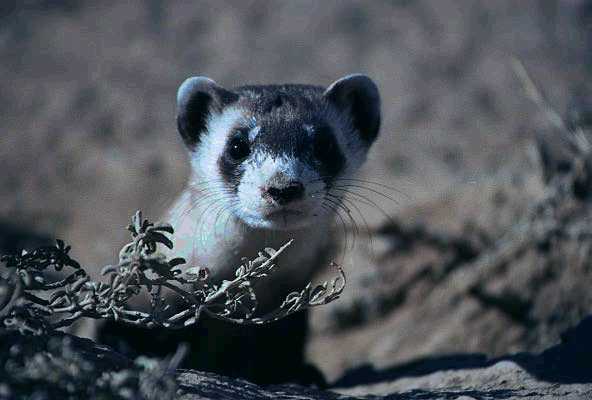 The Caspar Star-Tribune reports that a new wild colony of black-footed ferrets has been found on the Standing Rock Indian Reservation in South Dakota. North America’s only native ferret was thought to be extinct in the wild when illness struck a population in Meeteetse, Wyoming and the survivors were brought into captivity between 1985 and 1987.
The Caspar Star-Tribune reports that a new wild colony of black-footed ferrets has been found on the Standing Rock Indian Reservation in South Dakota. North America’s only native ferret was thought to be extinct in the wild when illness struck a population in Meeteetse, Wyoming and the survivors were brought into captivity between 1985 and 1987.
The US Fish and Wildlife Service’s endangered species description for the black-footed ferret said that, “It is unlikely that any undiscovered wild populations remain.”
According to the Star-Tribune, Mike Gutzmer, with Columbus, Nebraska-based New Century Environmental LLC was hired by reservation leaders to investigate reports of black-footed ferrets in the area. Gutzmer searched the reservation’s prairie dog towns for a month before finding the new population.
Re-introduced ferrets now breed in 19 locations, according to the US Fish and Wildlife Service.
Read the Star-Tribune article here.
Read the USFWS black-footed ferret page here.
Photo: Black-Footed Ferret Photo by Charlene Bessken, courtesy US Fish and Wildlife



 A mild winter means more bumblebees in Utah, a researcher says. Particularly, one rare species that previously only had 129 bees has been seen by the dozens in one Utah city alone. This news is hopeful because, generally, bumblebees have been in decline nationwide.
A mild winter means more bumblebees in Utah, a researcher says. Particularly, one rare species that previously only had 129 bees has been seen by the dozens in one Utah city alone. This news is hopeful because, generally, bumblebees have been in decline nationwide.
 Spring is here and a bunch of wildlife surveys are underway around the country.
Spring is here and a bunch of wildlife surveys are underway around the country.

